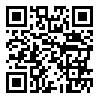Volume 11, Issue 40 (9-2004)
RJMS 2004, 11(40): 223-229 |
Back to browse issues page
Download citation:
BibTeX | RIS | EndNote | Medlars | ProCite | Reference Manager | RefWorks
Send citation to:



BibTeX | RIS | EndNote | Medlars | ProCite | Reference Manager | RefWorks
Send citation to:
Soltani Arabshahi S, Ajami A, Siabani S. Survey of Doctor-Patient Communication Skills Learning at Iran and Kermanshah Universities of Medical Sciences: Perceptions of Students, Interns and Faculty Members. RJMS 2004; 11 (40) :223-229
URL: http://rjms.iums.ac.ir/article-1-7-en.html
URL: http://rjms.iums.ac.ir/article-1-7-en.html
Abstract: (10198 Views)
Effective doctor-patient interpersonal communication has been emphasized increasingly in recent years. Communication skills are considered as one of the main components of clinical competence, helping precise diagnosis and patient’s compliance for therapeutic measures. Through communication skills the physician is able to demonstrate better performance in: breaking bad news to the patient and his relatives, overcoming patient’s anger and discomfort and helping chronic and terminal patient. The objective of this study was to investigate how communication skills are learned at Iran and Kermanshah Universities of Medical Sciences using medical students, interns and faculty members in order to help in planning(compiling) programs. In this descriptive-analytic study a self-administered questionnaire was given to target population in 4 major clinical wards (Internal Medicine, OB & Gyn., Pediatrics, and Surgery). After a pilot study, the questionnaire was distributed among target population. The total number of students/interns/staffs at Iran and Kermanshah Universities were 185/127/14 and 63/61/30 respectively. Based on obtained results 53.6% of students were aware of communication skills while 43.7% of students were not aware of these skills which this difference was significant. The first place of experience in communicating with patients was clinical ward(72.5%), hospital classroom(11.5%), emergency and outpatients ranked next(8%). The impact of teacher/resident presence on learning was assessed as very high and high. Observing teacher’s behavior and communication with patients got the highest score in both universities(71.4% & 76.7%) and those of the resident’s score got the next score(42.9%-66.7%). Less than 5% of scores was allocated to the other methods of learning including: resources, watching films and observation of a role play. The results of this study revealed that teaching and learning methods at both universities should be revised and formal instructional programs have to be implemented. Meanwhile, medical staffs have to play more active role in teaching the skills.
Type of Study: Research |
Subject:
Community Medicine





